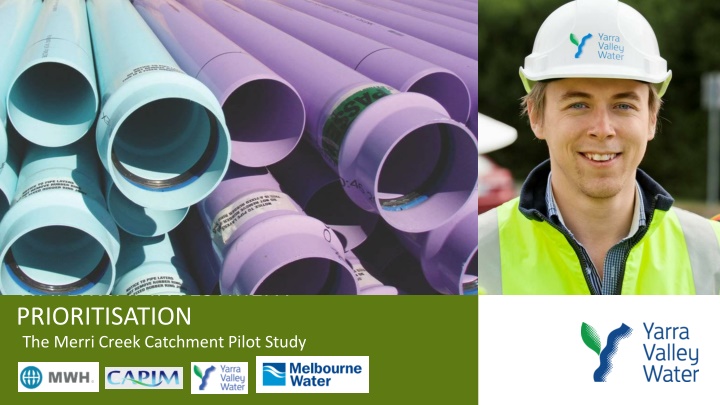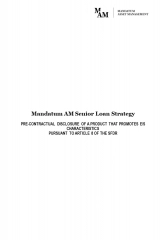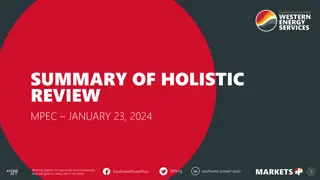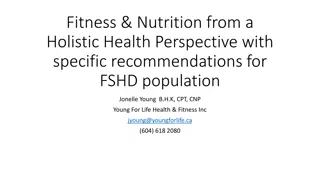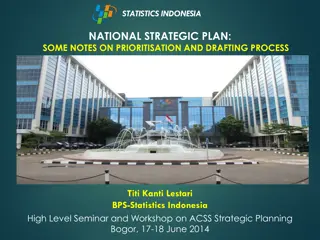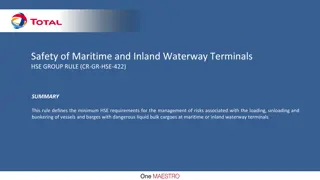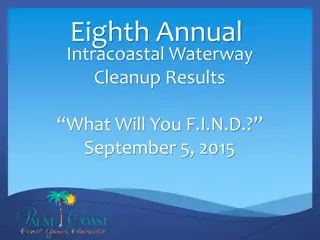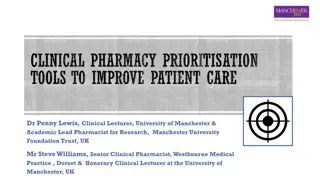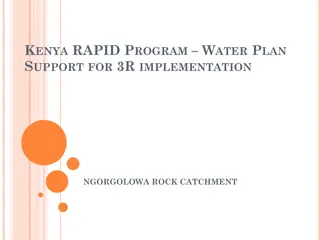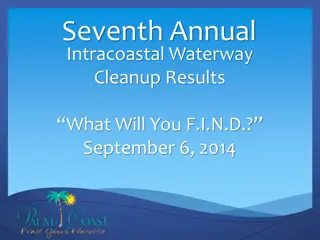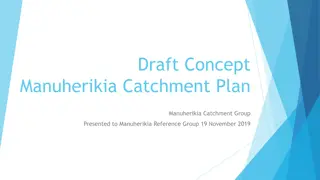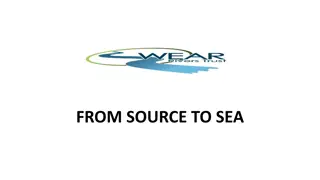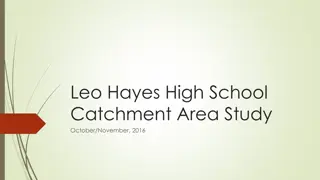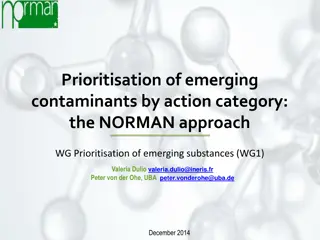Waterway Investment Prioritisation in the Merri Creek Catchment: A Holistic Review
Integrating water management programs can deliver enhanced value to the community in terms of improved waterway health and amenity. The pilot study aims to review existing and planned waterway health and amenity programs within a selected catchment, emphasizing community expectations and key waterway attributes. The study evaluates public health concerns in the Merri Creek, highlighting challenges like E. coli contamination and urban stormwater pollutants.
Download Presentation

Please find below an Image/Link to download the presentation.
The content on the website is provided AS IS for your information and personal use only. It may not be sold, licensed, or shared on other websites without obtaining consent from the author.If you encounter any issues during the download, it is possible that the publisher has removed the file from their server.
You are allowed to download the files provided on this website for personal or commercial use, subject to the condition that they are used lawfully. All files are the property of their respective owners.
The content on the website is provided AS IS for your information and personal use only. It may not be sold, licensed, or shared on other websites without obtaining consent from the author.
E N D
Presentation Transcript
WATERWAY INVESTMENT PRIORITISATION The Merri Creek Catchment Pilot Study
THE QUESTION Can we deliver better value to the community by integrating our water management programs and services? By integrating water agencies and local councils waterway investments, greater Hypothesis: value can be provided to the community in terms of (1) improved waterway health and (2) provision of amenity Undertaking a wholistic waterway investment review exercise of existing and Approach: planned waterway health and amenity programs within a selected pilot catchment.
HISTORICAL APPROACH Grey Infrastructure Large sewer duplications
CURRENT PLANNED INVESTMENT 5 YEARS Yarra Valley Water Melbourne Water Sewer main duplications Revegetation TOTAL EXPENDITURE ~ $19M Community grants Weed management Stabilisation Councils Parkland and stream management programs Desilting TOTAL EXPENDITURE ~ $5M Education programs Stormwater and site management practices Stormwater runoff programs / local WSUD assets Local Stormwater harvesting and reuse projects TOTAL EXPENDITURE ~ $1M
COMMUNITY EXPECTATIONS Commuting 1% Nature Appreciation 8% Other 2% Picnics 14% Exercising 38% Dog Walking 22% General relaxation 15% Note = Swimming [0%], Fishing [0%] and Canoeing [0%]
Three key waterway attributes were assessed: UNDERSTANDIN G THE IMPACT Public Health Environment Amenity/Aesthetics
PUBLIC HEALTH What do we know about the Merri Creek? Too much background E.coli for primary contact Too much E. coli during wet weather for secondary contact Wastewater overflows in wet weather are very infrequent (less than 1 per year) Large dilution during wet weather leads to sewer spills due to hydraulic capacity having minimal impact Urban storm water contributes 99% of all pollutant loads
PUBLIC HEALTH Key Conclusions? Primary or secondary contact in Merri Creek is not practically achievable regardless of wastewater infrastructure upgrades Wastewater overflows are very low risk for contact recreation in Yarra River and Port Phillip Bay Complete elimination of wastewater overflows would result in no measurable benefits for practically achievable public health outcomes or mitigation of risk to the Yarra River and Port Phillip Bay Identification and rectification of illegal sewer to storm water connections is best public health risk mitigation measure for Yarra River and Port Phillip Bay There are other barriers to achieving secondary or primary contact standards in the Merri Creek e.g. turbidity, toxicants, hydraulics, etc.
AESTHETICS & AMENITY Melbourne Water and Council s contribute to vegetation management / enhancement Key risks to aesthetics and amenity include: Gross pollutants from Stormwater discharge (high frequency) Gross pollutants from wastewater overflows (low frequency) Odours in the Merri Creek haven t been a key issue in the past and are considered low risk Turbidity / water murkiness is a key issue and vast majority of sediment loads come from stormwater
ENVIRONMENT Current Status: Urban sections of Merri Creek are highly degraded and typical for an urban stream Sediments contaminated with heavy metals and pesticides which represent the main threats to plant & animal life Mixture of point source and diffuse pollution Primary Areas of Focus? Stormwater pollutant load reductions Source control measures Riparian vegetation enhancement.
PLANNED EXPENDITURE VS OUTCOME Description Investment Outcome Benefit Sewer Hydraulic Upgrades to meet current SEPP 1 in 5yr wet weather containment standard ~$19M (80%) Public Health (YR &PPB only) Very Low Capital program for vegetation management (ecological enhancement and some amenity) Aquatic Life, Riparian vegetation, Aesthetics High ~$1.5M (6.5%) Maintenance programs (vegetation and litter/debris/sediment removal) Aquatic Life, Riparian vegetation, Aesthetics Aquatic Life, Aesthetics High ~$1.8M (7.5%) Stormwater Runoff / WSUD / harvesting and reuse projects/capacity and education programs High (local) ~$1.4M (6%) TOTAL ~ $25M
ALTERNATIVE APPROACHES http://www.sudswales.com/wp-content/uploads/2011/06/infiltration-basin.jpg Stormwater: Strategic stormwater to sewer diversion Additional gross pollutant traps Raingardens Community group grants Riparian Vegetation Sewer: ERS screening Sewer illegal connection identification and rectification Inflow and infiltration rectification https://s-media-cache-ak0.pinimg.com/736x/b0/db/44/b0db44f113dc230fbad83c7136e5672a.jpg
NEXT STEPS Currently monitoring to establish baseline and determine target areas: Litter surveys Drain surveys Water quality monitoring Working towards regulatory approval (EPA) for revised approach Further community consultation
QUESTIONS yvw.com.au
